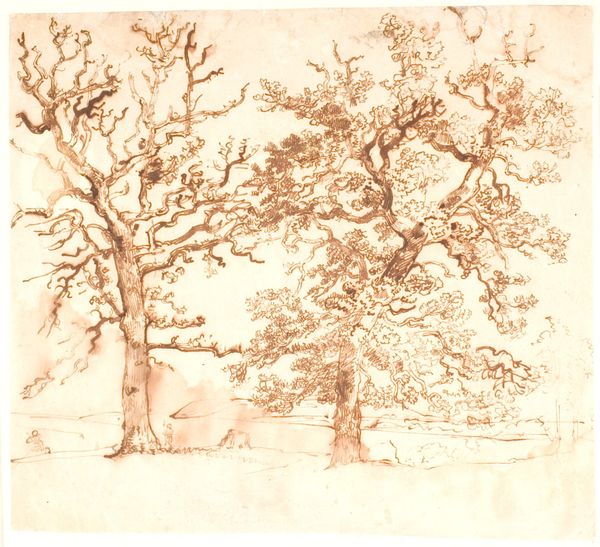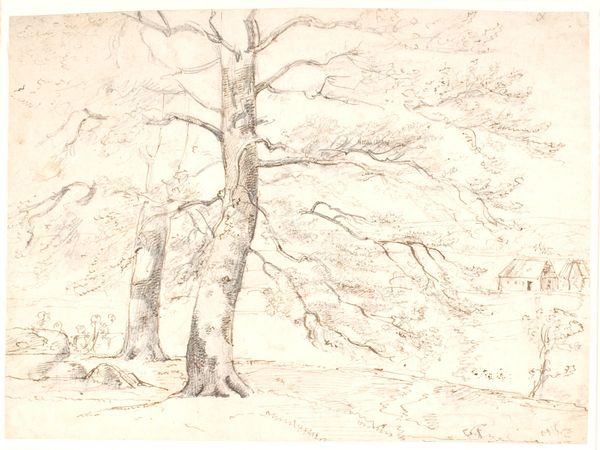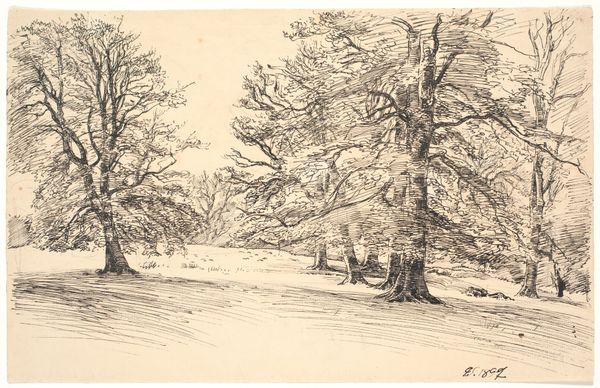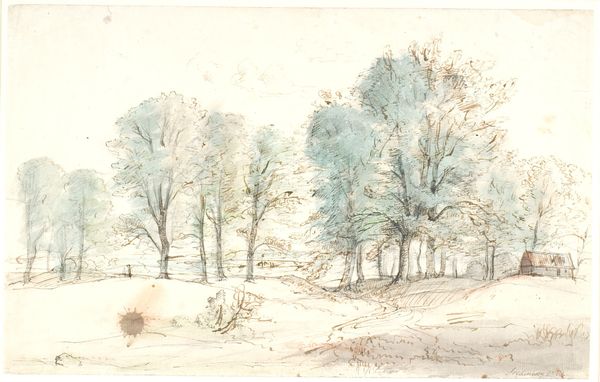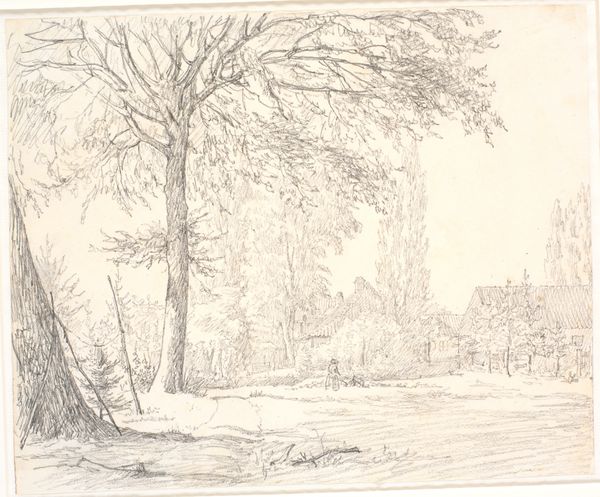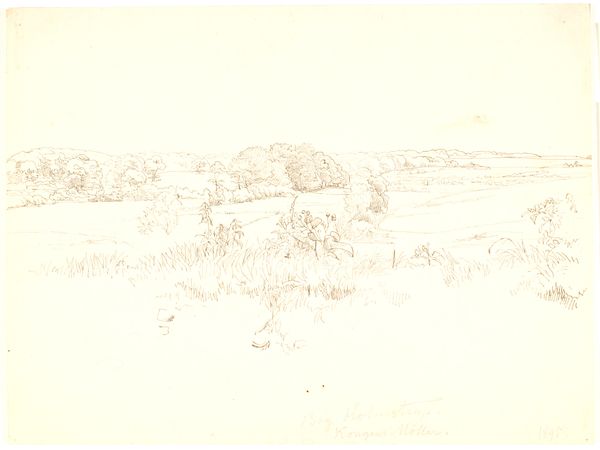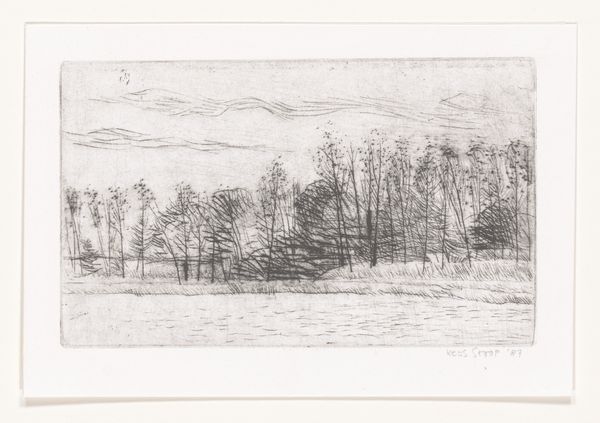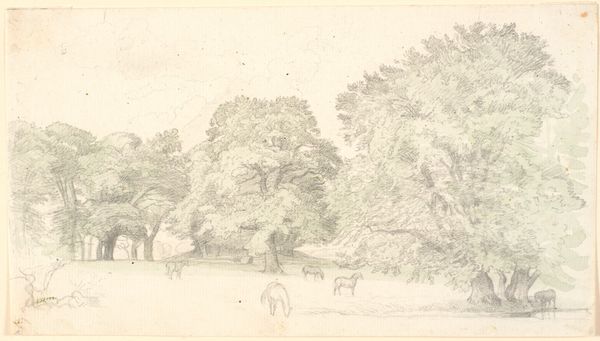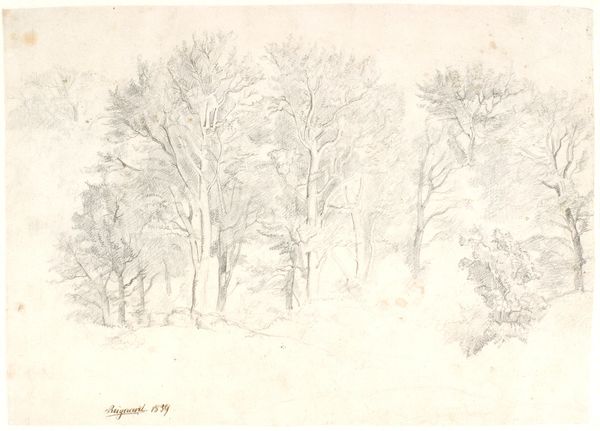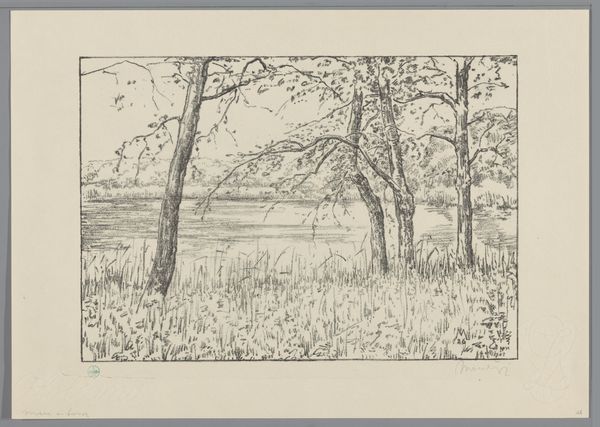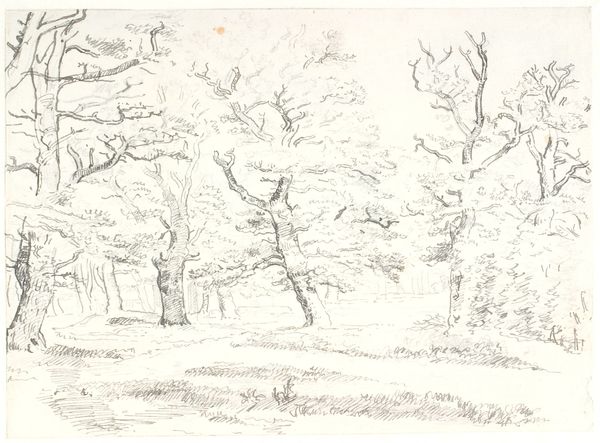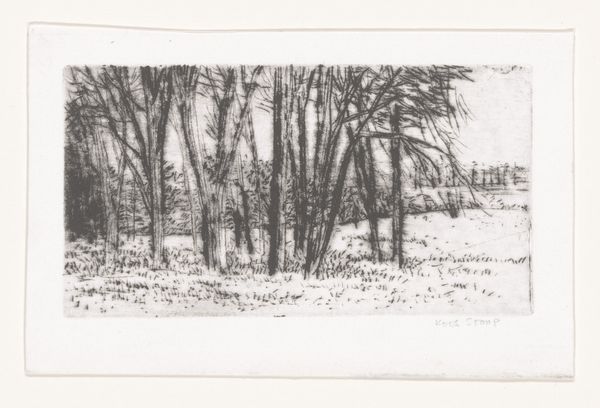
Landskab ved Esrom, i forgrunden en å med en bro, i baggrunden høje træer og et hus 1880s
0:00
0:00
drawing, pencil, graphite
#
drawing
#
landscape
#
pencil
#
graphite
#
academic-art
#
realism
Dimensions: 158 mm (height) x 244 mm (width) (bladmaal)
Curator: Standing before us is Hans Smidth’s "Landscape near Esrom, a stream with a bridge in the foreground, tall trees and a house in the background," dating from the 1880s. What’s your initial take on it? Editor: It feels very subdued, almost spectral. The use of graphite creates this muted atmosphere, a quiet hum rather than a vibrant scene. I'm drawn to the tall grass in the foreground and the small bridge to the left—it sets the tone, humble and very unassuming. Curator: I find myself thinking about how the simplicity of graphite elevates an otherwise mundane landscape. There’s an incredible depth achieved with so little, especially in how he renders the canopy of the trees. You can almost feel the breeze. Editor: Exactly! It also makes me wonder about the type of graphite Smidth used and the labor involved in its production during the 1880s. Was it locally sourced, or imported? That likely dictated the cost of the medium and therefore its accessibility and use by the artist. Curator: Interesting point, framing artistic choice as a resource question. Perhaps this readily accessible medium freed him to sketch en plein air, allowing for more spontaneity. Look at the little thatched cottage nestled beneath the trees—a scene ripe with sentimentality. Editor: While undeniably charming, I see it as reflective of the working class who toiled on that land. The trees, the water, the very graphite used—all resources extracted from the environment. Even this idyllic depiction holds a trace of labor and our inherent reliance on these systems. Curator: And I see a yearning for simpler times, an idealized rural life perhaps. The very lack of color intensifies that feeling of looking back through a misty memory. It’s the kind of scene that makes you want to light a pipe and watch the clouds roll by. Editor: I do appreciate how this unassuming landscape subtly unearths complex narratives about our environment and how art has depicted nature as both a provider and a resource. It serves as a potent reminder to examine the materiality that upholds both landscapes and art. Curator: Yes, looking closely it has given me a richer sense of nature itself as a vast repository of stories, quietly whispering across centuries and artistic styles. Editor: I agree, the quiet hum speaks volumes about the materials we choose to tell these stories, and what those choices can unveil.
Comments
No comments
Be the first to comment and join the conversation on the ultimate creative platform.
